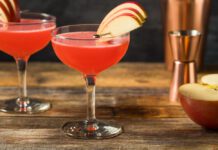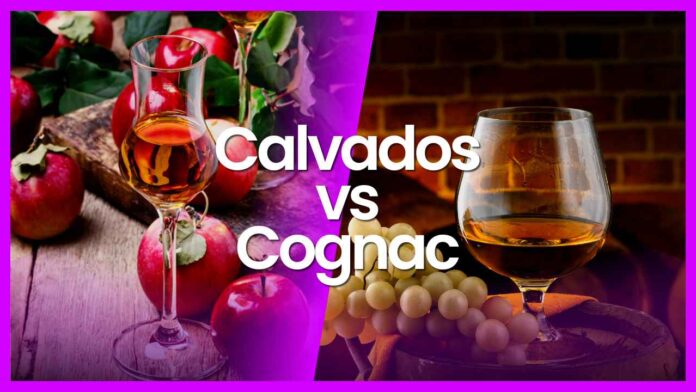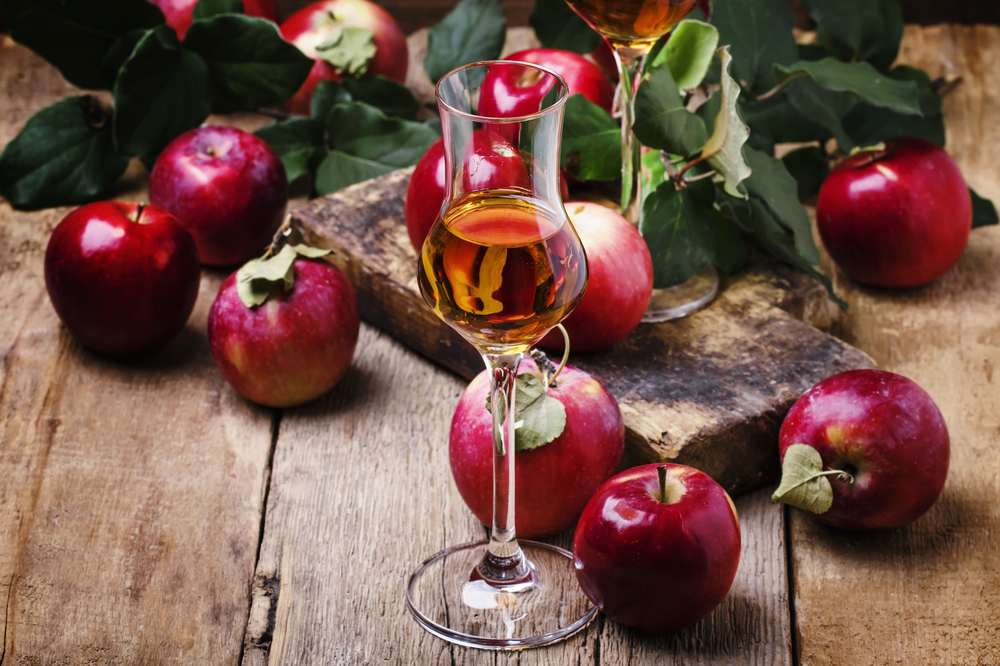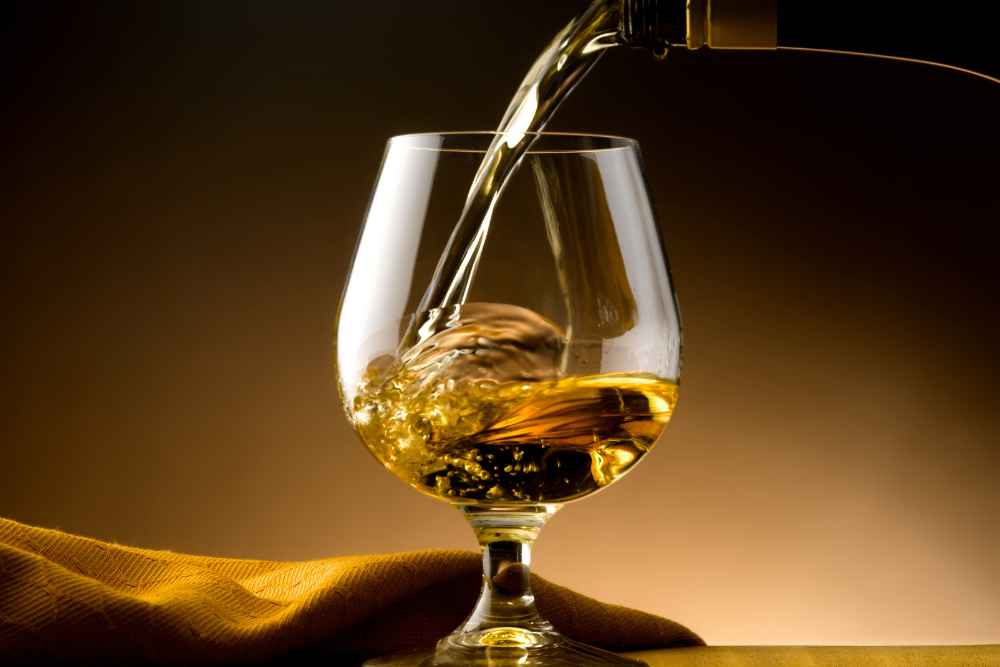This page may contain affiliate links. Please see our Disclaimer for more information. Always drink responsibly and adhere to your local legal drinking age.
Introduction
Welcome to the world of fine spirits, where Calvados and Cognac reign supreme as two exceptional choices for your sipping pleasure. While they share similarities in being rich, aged brandies, these luxurious libations, each boast unique flavors and heritage that set them apart.
Delve into this comprehensive guide exploring the origins, production methods, taste profiles, and ideal pairings for both Calvados and Cognac, empowering you to make an informed decision when choosing these exquisite options.
Key Takeaways:
- Cognac and calvados are different varieties of aged brandy with unique characteristics in base ingredients, production methods, aging processes, flavors, and aromas.
- Calvados is made from fermented apples, while Cognac is made from white wine distilled twice using copper pot stills. Calvados boasts fruity and spicy notes with a hint of floral essence, while Cognac has nutty and vanilla flavors with woody undertones.
- Both spirits can be enjoyed neat or mixed into cocktails for an added punch of flavor. They should be served at the right temperature to fully appreciate their complex flavors – slightly warmed for Calvados in a small wine glass; room temperature in a snifter glass for Cognac.
- To enhance your drinking experience further, pair them with complementary food such as cheese, chocolate, fruit, nuts, or charcuterie. Try out popular cocktail recipes like Applejack Sour or Sidecar featuring these rich brandies.
Calvados
At first glance, Calvados and Cognac may seem quite similar – they are aged spirits with rich histories and complex flavor profiles. However, the key difference between these two tasty libations lies in their base ingredients.
Calvados is an apple brandy native to Normandy, France, made primarily from apples (occasionally pears).
The production processes for each spirit also vary significantly. For example, while making Calvados involves fermenting apples into cider or perry before distillation in copper pot stills or column stills, Cognac requires distilling white wine twice using traditional Charentais copper alembic stills.
Furthermore, aging methods differ; Calvados must be aged for at least two years in oak barrels to develop their unique flavors and complexities.
As cocktail drinkers explore these fine spirits side-by-side in their favorite lounges or home bars, today would discover that their distinct characteristics shine through clearly on the palate: Calvados’ fruity and spicy notes harmonize beautifully with its soft sweetness—perfect for pairing with desserts or sipping neat during a meal—while the bold richness of nutty vanilla tones paired with an inviting woody aroma set Cognac apart as a magnificent after-dinner drink or classic cocktail ingredients such as Sidecar or Vieux Carré.
Understanding Calvados And Cognac
Discover the unique qualities of Calvados and Cognac, including their production process, flavor profiles, and serving suggestions.
How They Are Made
Creating Calvados and Cognac may seem similar at first glance, both being types of brandy; however, their overall production methods differ slightly owing to distinct raw materials.
Calvados production begins with fermenting freshly pressed apple cider through single distillation in copper pot stills.
On the other hand, Cognac production entails distilling white wine made primarily from Ugni Blanc grapes grown exclusively in the region surrounding the town of Cognac in western France.
It undergoes two rounds of distillation using copper pot stills before resting and maturing inside French oak casks for at least two years.
Differences In Taste, Aroma, And Nutritional Information
When comparing Calvados and Cognac, there are notable differences in taste, aroma, and nutritional information that can influence your decision on which to sip next. Here’s a comparison table to help you understand their unique characteristics.
| Aspect | Calvados | Cognac |
|---|---|---|
| Taste | Fruity and spicy with apple notes | Rich and smooth with nutty and vanilla flavors |
| Aroma | Appley, floral, and subtle spice hints | Woody, fruity, and floral with hints of spice and vanilla |
| Nutritional Information (per 1.5 oz serving) | Approximately 100 calories, 0 g fat, 0 g protein, 0 g carbohydrates | Approximately 105 calories, 0 g fat, 0 g protein, 0 g carbohydrates |
Please take note of these differences when choosing between the two spirits, as they can impact your overall sipping experience and help you decide which one will better suit your palate and preferences.
Top Spirits To Sip This Fall
Try sipping on some of the best spirits this fall, like applejack, Calvados, Cognac, Brandy, and Whiskey.
Applejack
If you’re a bourbon fan, then applejack might be the perfect spirit to try this Fall season. Made from blending fermented cider apples with neutral spirits, applejack is an American version of apple brandy.
Traditionally made using North American cider apples, applejack was produced through “jacking” or freeze distillation until the mid-19th century when column stills became more prevalent.
Some popular cocktail recipes featuring applejack include Jack Rose (with grenadine and lime juice) and Stone Fence (with hard cider).
Calvados
Calvados is a delicious apple brandy from the Normandy region of France. It is made by distilling fermented cider, producing a spirit that boasts fruity and spicy notes with a hint of floral essence.
Unlike cognac, which is made from grapes, calvados’ unique production process means it has its distinct character and flavor profile.
It can be enjoyed neat or mixed into cocktails for an added punch of flavor. Some popular brands include Christian Drouin XO Calvados and AOC Calvados Pays d’Auge.
Cognac
Cognac is a type of brandy from France’s southwestern region. Cognac’s production method makes it unique, which involves distilling white wine in copper pot stills and aging it in oak barrels for at least two years.
This process produces a nutty, vanilla, and woody flavor profile that pairs well with desserts or rich meats like foie gras.
One notable fact about Cognac is that it was named after its birthplace town in France, where the King’s ministers were known for their love of this spirit. Some popular brands include Hennessy, Courvoisier, and Martell – all of which offer various aged options to suit different preferences and budgets.
Brandy
Brandy is a type of spirit made by distilling wine or fermented fruit juices. It is typically aged in oak barrels, which gives it its distinct flavor and aroma. There are many different types of brandy, including cognac, Armagnac, and calvados.
Cognac is made from grapes grown in the Cognac region of France and is known for its nutty, vanilla, and woody flavor profile. Armagnac comes from France but uses a single-distillation process instead of double-distilling, like cognac.
Conversely, Calvados is distilled from apple cider or pear cider and must be produced in specific regions of Normandy to be classified as such. Applejack is another popular type of American brandy made by fermenting apples before distillation.
Whiskey
Whiskey is popular with cocktail drinkers, especially during the fall season. With its bold and complex flavors, whiskey can be enjoyed neat or as part of a delicious cocktail.
There are many different types of whiskey, including bourbon, rye, and scotch. Bourbon is made primarily in America and has a sweet flavor profile that pairs well with spicy cocktails like Old Fashioned.
Rye whiskey has a spicier taste than bourbon and adds depth to classic whiskey cocktails like a Manhattan. Finally, Scotch is made in Scotland and has smoky undertones that make it perfect for sipping on its own or adding complexity to cocktails like the Rob Roy.
How To Enjoy Calvados And Cognac
Sip Calvados neat or on the rocks in a small wine glass to fully appreciate its fruity aroma. Cognac is best enjoyed at room temperature in a snifter glass to enhance its nutty and woody flavors.
Best Serving Temperatures
To fully appreciate the complex flavors of Calvados and Cognac, it’s essential to serve them at the right temperature. Calvados is best enjoyed at room temperature or slightly warmed by holding the glass in your hand.
This helps to release its natural aroma and bring out its bold taste.
On the other hand, Cognac should be served neat and at room temperature, but the ideal temperature depends on what you’re pairing it with. For example, if you’re serving Cognac alongside rich meat dishes or dark chocolate desserts, it’s best to keep it slightly warmer than usual to help balance out the richness of the food.
Tasting Notes
To get the most out of your Calvados or Cognac, knowing what flavors and aromas to look for when tasting is essential. For Calvados, expect a fruity and floral profile with hints of spice and a distinct apple flavor from its base ingredient.
On the other hand, Cognac has more nutty and woody notes with slight hints of vanilla as well. When sipping on both spirits, take note of their texture – Calvados is often described as velvety, while Cognac can have a buttery mouthfeel.
As you explore different brands and ages, remember that personal preference plays a big role in determining which spirit you’ll enjoy most.
Pairing Suggestions
For the perfect Calvados or Cognac experience, pairing your drink with the right food is essential. Here are some suggestions to try:
1. Cheese: Try pairing Calvados with a sharp cheddar or Gouda, while Cognac pairs well with brie or camembert.
2. Chocolate: Calvados and Cognac pair well with dark chocolate for a decadent dessert.
3. Fruit: For a lighter pairing option, consider fresh fruit such as apples or pears to complement the fruity notes in Calvados.
4. Nuts: The nutty flavor of Cognac works well with roasted almonds or hazelnuts.
5. Charcuterie: A salty charcuterie board complements Calvados and Cognac for a savory pairing option.
Remember to experiment with different pairings to find your favorite combination. And don’t forget to enjoy your drink at the recommended serving temperature in a tulip-shaped glass for an optimal taste experience!
Cocktail Ideas
Looking for new and exciting ways to enjoy your Calvados or Cognac? Try these cocktail ideas:
1. Applejack Sour: Mix Calvados, lemon juice, simple syrup, and a dash of bitters in a shaker with ice. Strain into a glass and garnish with an apple slice.
2. Cognac Old Fashioned: Muddle sugar and bitters in the bottom of a glass. Add ice, Cognac, and a splash of water. Stir well and garnish with an orange peel.
3. French Connection: Combine equal parts Cognac and amaretto in a glass over ice. Stir well and enjoy.
4. The Normandy Cooler: Mix Calvados, elderflower liqueur, apple juice, lemon juice, and club soda in a shaker with ice. Strain into a glass filled with ice and garnish with an apple slice.
5. Brandy Alexander: Blend Calvados or Cognac with creme de cacao and heavy cream until smooth. Pour into a chilled glass and sprinkle with nutmeg.
6. Sidecar: Combine Cognac, orange liqueur, and lemon juice in a shaker with ice. Strain into sugar-rimmed glass and garnish with an orange twist.
Remember that brandy can also be enjoyed neat or on the rocks if you prefer to savor its complex flavors without mixing it into cocktails.
Calvados Vs Cognac: A Detailed Comparison
Compare and contrast the origins, production processes, aging methods, appropriate glassware, and recommended Calvados and Cognac brands to discover which suits your tastes.
Origin And History
Calvados and Cognac both have a rich history rooted in the French tradition. Calvados is believed to date back as far as the 16th century, with references to apple brandy production by historian de Gouberville.
Conversely, Cognac was popularized by King Francis I in the 16th century when he granted special privileges to wine merchants in southwestern France. The popularity of Cognac grew over time, especially among aristocrats and royal families across Europe, who enjoyed its distinct flavor profile.
Production Process And Regions
Calvados and Cognac are both types of brandy, but they are produced in different regions of France. Calvados is strictly produced in the Normandy region, while Cognac is produced in the Cognac region.
The production process for each spirit also differs.
For Calvados, apples or pears are harvested from designated orchards within the Normandy region and then crushed to make juice or cider. The cider is distilled twice using either a column or a copper pot still before being aged in oak barrels for at least two years.
On the other hand, Cognac is made by distilling white wine from specific grape varieties grown in the Cognac region using a copper pot still called an alembic.
The regulations surrounding production ensure that only spirits produced according to strict standards can be labeled as Calvados or Cognac.
Aging Methods
The aging process of both Calvados and Cognac play a crucial role in the flavor profile of each spirit. Calvados is aged in oak barrels, but unlike Cognac, the barrels are typically made from trees grown in the region of Limousin.
Calvados’ aging time can range from 2 years to over 20 years, with different classifications based on age statements or traditional designations like VS, VSOP, and XO.
Meanwhile, Cognac must be aged for at least two years in oak barrels made from trees grown within specific regions of France, such as Limoges or Tronçais. The longer these brandies age, the more complex their flavors become as they absorb characteristics from the wood.
Appropriate Glassware
The kind of glass you use to serve your cocktail can make all the difference in your drinking experience. Calvados is best done in a tulip-shaped glass, which helps concentrate its aroma and bring out the fruity, floral, and spicy notes of this apple brandy from Normandy.
On the other hand, Cognac requires a balloon-shaped glass that allows for swirling and warming up the drink with your hands to release its nutty, vanilla, and woody flavors.
Using the proper glassware is crucial to fully appreciate the unique characteristics of each drink and elevate your senses.
Recommended Brands
If you are looking for high-quality Calvados or Cognac, here are some recommended brands to try:
Calvados:
1. Christian Drouin XO Calvados
2. Boulard Calvados Pays d’Auge VSOP
3. Domaine Dupont Fine Reserve Calvados
Cognac:
1. Hennessy VSOP Privilege Cognac
2. Remy Martin XO Cognac
3. Camus XO Borderies Cognac
Each brand has its unique flavor profile, aging methods, and production processes that may suit different tastes and preferences. It’s worth exploring these top spirits to discover your favorite and enjoy a perfect sip this fall season!
Flavor Profiles Of Calvados And Cognac
Calvados has a fruity, floral, and spicy taste, while cognac is nutty, vanilla, and woody.
Calvados: Fruity, Floral, And Spicy
Calvados is an apple brandy with a unique flavor profile, making it stand out from other spirits. Unlike cognac’s nutty and woody taste, calvados has a fruity, floral, and spicy taste that can vary depending on the variety.
When drinking calvados neat or in cocktails like the famous Calvados Cocktail or Apple Cider Sidecar, its fruity notes shine through and its subtle spiciness. It also pairs well with cheese platters and desserts featuring apples or pears as ingredients.
Cognac: Nutty, Vanilla, And Woody
Cognac is known for its nutty, vanilla, and woody flavors, creating a warm and sweet sensation on the palette. The aging process of Cognac in oak barrels allows the liquor to absorb flavors from the wood, such as cedar or oak, contributing to its unique aroma and taste profile.
Different brands of Cognac will produce varying degrees of nuttiness, sweetness, or spiciness due to their age and production techniques. For example, Bache-Gabrielsen has a VSOP (Very Special Old Pale) cognac with notes of almond paste, while Camus offers an XO (Extra Old) version with hints of chocolate.
Factors To Consider When Choosing Between Calvados And Cognac
Consider your personal taste preferences, the occasion and food pairing options, budget considerations, and availability and accessibility when deciding between Calvados and Cognac.
Personal Taste Preferences
It’s essential to consider your taste preferences when choosing between Calvados and Cognac. While both spirits have distinct flavor profiles, they may not suit everyone.
For instance, if you enjoy the fruity notes of apples and pears, Calvados might be more up your alley.
Some drinkers enjoy cocktails made with younger VS or VSOP varieties of Cognac as these provide a smooth entry point into the world of this spirit. Others appreciate the complex aromas and tastes that come from aged Calvados.
Occasions And Food Pairing Options
Whether you are sipping Calvados or Cognac, there are certain occasions and food pairing options to remember. For instance, both spirits are perfect for after-dinner drinks due to their rich and complex flavors.
Calvados pairs wonderfully with apple desserts, such as tarte Tatin or apple pie.
When enjoying a cocktail made with Calvados, consider its fruitiness when choosing mixers. A classic ingredient that complements Calvados perfectly is fresh apple cider, though ginger ale and lemon juice also work well.
Similarly, Cognac-based cocktails often feature citrus juices and bitters for a balanced flavor profile.
Budget Considerations
Choosing between Calvados and Cognac can be daunting for cocktail drinkers on a budget. While both spirits are considered luxurious indulgences, options are available that won’t break the bank.
When selecting a bottle of Calvados or Cognac, it’s essential to consider factors such as age, production methods, and brand reputation. Some brands offer younger varieties at more affordable prices without sacrificing quality and taste.
For instance, Christian Drouin XO Calvados is an excellent choice for those seeking a top-quality experience without spending too much.
Availability And Accessibility
Calvados and Cognac are widely available in well-stocked liquor stores and bars across the United States. While some brands may be more regionally specific or more challenging to find than others, a quick search online can help you locate your favorite bottle of either spirit.
Due to their popularity among cocktail drinkers and connoisseurs alike, many bars will also offer a selection of Calvados and Cognac-based drinks on their menus.
Regarding accessibility, both spirits can range in price depending on factors such as age, rarity, and production methods. However, plenty of options for those on a budget still provide excellent quality and flavor.
Some affordable brands experts recommend include Christian Drouin VSOP Calvados or Remy Martin 1738 Accord Royal Cognac.
Calvados And Cognac: The Perfect Gifts For Spirits Enthusiasts
Are you looking for the perfect gift for a spirits enthusiast? Look no further than Calvados and Cognac, two unique and delicious types of brandy that are sure to impress. From their distinct flavors to their rich history, there’s much to learn about these beloved French drinks.
Unique Features And Presentation Options
Calvados and Cognac are both spirits that offer unique features and presentation options. Some brands of Calvados, for example, come in elaborate bottles or packaging that make them stand out as gifts.
Christian Drouin XO Calvados has a sleek, modern bottle with the image of an apple tree etched onto it.
In addition to their packaging, each spirit also offers distinctive taste profiles. Calvados tends to have a fruity and floral aroma with spicy notes, while Cognac is known for its nutty and woody flavors with hints of vanilla.
These differences in taste allow for different pairing options when mixing cocktails or enjoying these spirits neat.
Recommended Gift Ideas
If you’re looking to gift a spirits enthusiast, Calvados and Cognac are top contenders. Here are some recommended gift ideas:
1. Christian Drouin XO Calvados – Aged for 6 to 10 years in oak barrels, this rare Calvados offers a complex blend of apple and floral notes with a smooth finish.
2. Château de Breuil VSOP Calvados – This brandy has an intense aroma of ripe apples with hints of vanilla and spice, making it perfect for sipping neat or in cocktails.
3. Martell Cordon Bleu Cognac – A luxurious choice for any occasion, this premium Cognac boasts a rich flavor profile of fruits, spices, and oak that pairs well with chocolate or cigars.
4. Camus Borderies VSOP Cognac – Made from grapes grown in the Borderies terroir, this smooth and aromatic Cognac is perfect for enjoying on the rocks or in cocktails.
5. Pierre Ferrand 1840 Original Formula Cognac – With its bold character and spicy finish, this historically accurate recipe is great for those who appreciate classic cocktails like the Sazerac or Vieux Carré.
Whether it’s a rare vintage bottle or a distinctive presentation set, gifting exceptional spirits from family-owned distilleries will impress any cocktail lover.
FAQ
1. What is the difference between Calvados and Cognac?
Calvados is made from apples, while Cognac is made from grapes. Additionally, Calvados is produced in the Normandy region of France, while Cognac comes from the Charente region.
2. Which one has a stronger flavor profile: Calvados or Cognac?
Generally speaking, it depends on personal preference and the brand of either drink being compared. However, Calvados tends to have a more pronounced fruity taste due to its apple base, while Cognac may be more complex with notes of vanilla and oak.
3. Should I drink Calvados or Cognac neat?
Both drinks can be consumed neat as sipping alcohol but can also be used in cocktails such as an Old Fashioned or Manhattan.
4. How do I choose which one to purchase for myself or as a gift?
Consider what type of flavors you prefer – if you are into those that skew towards fruitier tastes, go with calvados, and those who prefer something rich and complex opt for cognacs; Additionally, factors like price point may play a role when making your decision- both types offer fantastic options at various price points so it will all come down to what best fits your budget! Lastly, consider checking out online reviews to see how different brands compare against each other before making the final choice!
Conclusion
In conclusion, Calvados and Cognac are fantastic choices for your next cocktail or after-dinner drink. While Cognac has a more well-known reputation, Calvados offers a unique twist with its apple-based flavor profile.
It’s up to personal preference when choosing between the two, but no matter what you choose, you won’t be disappointed. So whether enjoying with friends or sipping solo, take some time this fall season to try out these delicious brandies and find your perfect match.





















